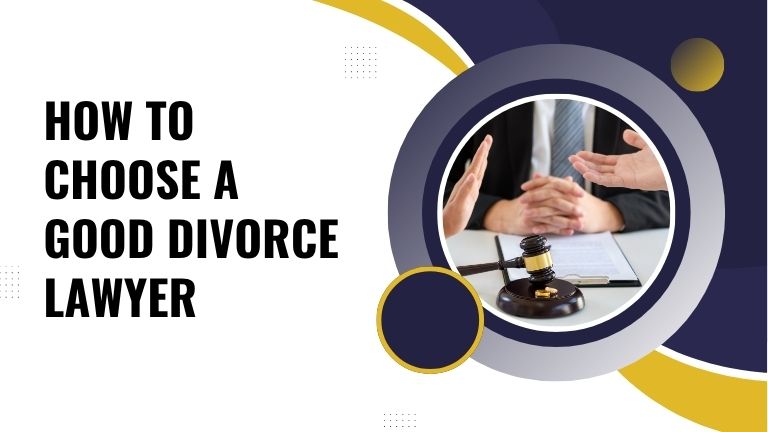If you are a student or someone who recently graduated in the USA, and you have taken out more than one student loan, managing all of them can feel difficult. Each loan may have a different amount to pay every month, a different interest rate, and different due dates. It can be very confusing to keep track of everything. You might even forget to make a payment because there’s too much to remember.
Many people in this situation feel stressed or overwhelmed. That’s why a lot of them decide to consolidate their student loans. This means they combine all their loans into one single loan. So instead of making many different payments each month, they only have to make one. This makes managing money easier and, in some cases, the monthly payment also becomes smaller.
In this guide, we will explain how to consolidate student loans in the USA in a very simple and easy way. You don’t need to be an expert to understand it. We’ll talk about what loan consolidation means, how the process works, and how you can do it step by step. This guide is made especially for people who feel confused, worried, or tired of keeping track of many loans at the same time. After reading it, you’ll feel more confident about what to do next.
What Is Student Loan Consolidation?
Student loan consolidation is a process that combines multiple student loans into one single loan. Instead of paying several lenders each month, you make one payment to one lender. This can help you keep track of your payments more easily. It’s like organizing your bills into one easy-to-manage payment instead of having to remember many different ones.
When you consolidate, your new interest rate will be a weighted average of your current interest rates, rounded up to the nearest one-eighth percent. This means it won’t be lower than your current rates, but it will simplify your payments. In some cases, people find that it also makes their monthly payments more affordable because the repayment period is extended.
There are two main types of student loan consolidation:
- Federal Student Loan Consolidation: This is offered by the U.S. Department of Education. It combines only federal loans. You do not need a credit check to qualify, and it allows you to keep many federal benefits.
- Private Student Loan Consolidation (Refinancing): This is done through private lenders and can combine both federal and private loans. Your credit score and income matter here. If you have a strong credit history, you might get a lower interest rate.
Consolidation can make your monthly payments lower, but it may extend the loan term. This means you might pay more in interest over time. However, for many people, managing one payment is easier and more helpful.
Types of Student Loan Consolidation
Federal Loan Consolidation
If you have federal loans such as Direct Subsidized Loans, Direct Unsubsidized Loans, Perkins Loans, or PLUS Loans, you can combine them using a Direct Consolidation Loan. This is done through the government website StudentAid.gov. It’s free to apply, and you can choose a new repayment plan based on your income.
Pros:
- One simple monthly payment
- Access to different repayment plans such as Income-Based Repayment (IBR) or Pay As You Earn (PAYE)
- Keeps federal loan benefits like forgiveness programs, deferment, and forbearance
- No credit check required
Cons:
- Might increase total interest paid over time
- Doesn’t lower your interest rate, only averages them
- Resets progress toward loan forgiveness in most cases
Private Loan Consolidation (Refinancing)
Private lenders like SoFi, Earnest, or Credible offer loan refinancing. This is helpful if you want to combine both private and federal loans or get a lower interest rate. Refinancing can save you money, especially if interest rates have dropped since you first borrowed the loans.
Pros:
- May lower your interest rate if you have good credit
- Combines both private and federal loans into one
- Flexible loan terms and repayment options
Cons:
- You lose federal loan benefits (like income-driven repayment or forgiveness)
- Requires good credit score and stable income to qualify
- Might not be ideal during times of financial uncertainty or job changes
Who Should Consolidate Student Loans?
Loan consolidation isn’t right for everyone. It works best for people who:
- Have multiple federal loans and want to make just one payment
- Want to qualify for income-driven repayment plans
- Want to switch to a new servicer with better customer service
- Want to get out of default on a federal loan
- Need lower monthly payments due to financial hardship
However, consolidation may not be a good choice if:
- You’re already close to paying off your loans and don’t want to reset the clock
- You want to keep your current low interest rates, especially if you locked in good terms years ago
- You qualify for Public Service Loan Forgiveness (PSLF) and don’t want to lose existing qualifying payments
- You don’t meet the credit requirements for private refinancing
Before consolidating, think about your future goals, income, and the types of loans you have.
Pros and Cons of Consolidating Student Loans
Pros:
- One monthly payment instead of many
- Access to new repayment plans like income-driven repayment
- Can lower monthly payments and reduce financial stress
- Helpful for managing defaulted loans or simplifying financial planning
- Improves organization and reduces missed payments
Cons:
- May increase the time it takes to repay the loan (up to 30 years)
- Interest rates are averaged, not lowered, in federal consolidation
- Can lose benefits if federal loans are refinanced with private lenders
- Might delay loan forgiveness if consolidation resets the timeline
Step-by-Step Process to Consolidate Student Loans in USA
Step 1: Check Eligibility
Make sure your loans are eligible for consolidation. Most federal loans qualify. If you have private loans, you’ll need to look into refinancing instead. Visit StudentAid.gov or call your loan servicer to verify your loan types.
Step 2: Review Your Loans
Collect details about all your student loans. Note down your balances, interest rates, and servicer names. This helps you understand how much you owe and what might change after consolidation.
Step 3: Decide on Federal or Private Consolidation
If you only have federal loans and want to keep government benefits, go with federal consolidation. If you want a better interest rate and don’t need federal protections, private refinancing might be better. Make sure you compare long-term savings vs. benefits.
Step 4: Choose a Lender or Go to StudentAid.gov
- For federal consolidation, visit StudentAid.gov and apply for a Direct Consolidation Loan. Choose your repayment plan and servicer.
- For private consolidation, compare lenders like SoFi, Earnest, and others to find the best rate. Use tools like Credible to compare offers easily.
Step 5: Submit Application
Fill out the application form carefully. For federal loans, select your repayment plan (like Income-Contingent Repayment). For private refinancing, upload necessary documents like proof of income, loan statements, and identification.
Step 6: Wait for Approval
It may take a few weeks for your consolidation to go through. You’ll be notified by email or mail. Keep making your regular payments until you are approved and the new loan is active.
Best Companies and Tools to Consolidate Student Loans
Federal Option
- StudentAid.gov – Free government platform for federal loan consolidation. Provides information on eligibility, repayment plans, and application steps.
Private Options
- SoFi – Low rates, flexible terms, and career coaching. Good for high-credit borrowers.
- Earnest – Custom payment plans and no fees. Ideal for young professionals.
- Credible – Compares multiple lenders to find the best rate. Offers prequalification without affecting your credit.
- LendKey – Offers refinancing from community banks and credit unions, sometimes with lower rates.
Use online tools to compare options and calculate monthly payments.
Things to Consider Before Consolidating
- Interest Rate: Federal consolidation doesn’t lower rates. Private refinancing might if you qualify.
- Loan Term: You may get lower monthly payments, but you might pay more over time.
- Loss of Federal Benefits: If you refinance federal loans with a private lender, you lose federal protections.
- Credit Score: Private refinancing often needs a good credit score and stable income.
- Timing: Don’t consolidate while you’re in the middle of a loan forgiveness program unless advised to do so.
Common Mistakes to Avoid
- Consolidating just to delay payments without a clear plan
- Not comparing lenders before refinancing
- Refinancing federal loans without knowing the risks or losing forgiveness eligibility
- Choosing a longer term just to lower payments, which increases interest paid
- Missing deadlines or not checking the new loan status after approval
Final Thoughts
Consolidating student loans can make paying them back easier and less stressful. Whether you choose federal consolidation or private refinancing, it’s important to understand the pros and cons. Think about your current loans, your financial goals, and whether you want to keep federal benefits. Always compare options before making a decision.
For many borrowers, consolidation is a smart way to simplify monthly payments, reduce financial pressure, and stay on track. However, it’s not a one-size-fits-all solution. Carefully evaluate your situation and speak with your loan servicer or financial advisor if needed.
By following this step-by-step guide, you now understand how to consolidate student loans in the USA. Taking the time to learn your options can help you save money and stay on top of your finances more easily. If you’re feeling overwhelmed by multiple payments, this could be the smart move to simplify your life and take control of your student debt.
FAQs About Student Loan Consolidation in the USA
Q1: Can I consolidate federal and private loans together? Only private lenders allow combining both federal and private loans through refinancing. Federal consolidation only includes federal loans.
Q2: Will consolidating lower my interest rate? Federal consolidation uses a weighted average. Private refinancing might lower your rate if you have strong credit.
Q3: How long does the consolidation process take? Federal consolidation takes about 30–60 days. Private lenders may process applications in 2–3 weeks.
Q4: Does consolidation hurt my credit score? It may cause a small temporary dip due to a hard credit check but can improve your score over time if it helps you stay current on payments.
Q5: Can I consolidate loans more than once? Yes, if you have new eligible loans or a need to switch repayment plans again. But benefits like forgiveness timelines may reset.






